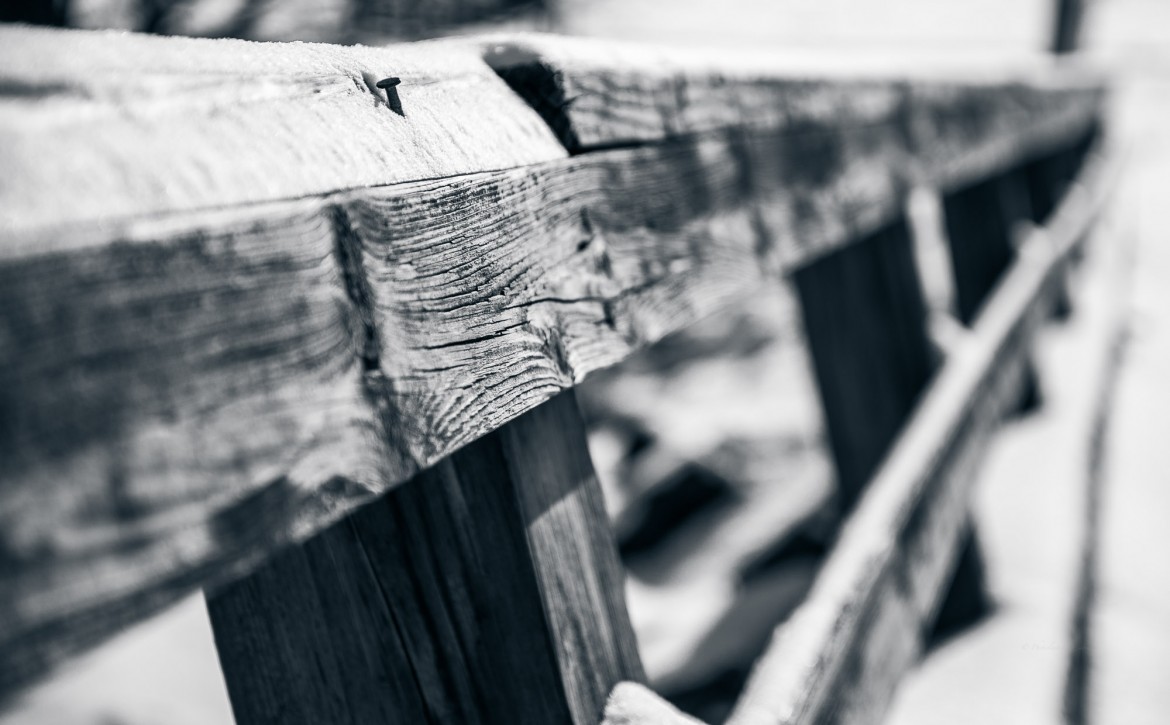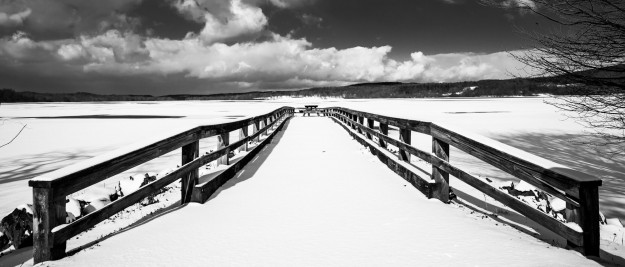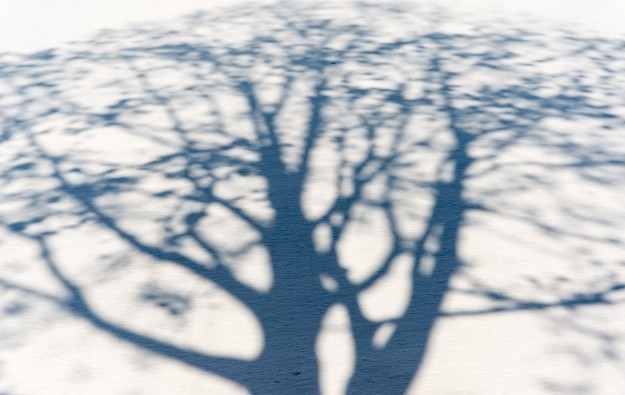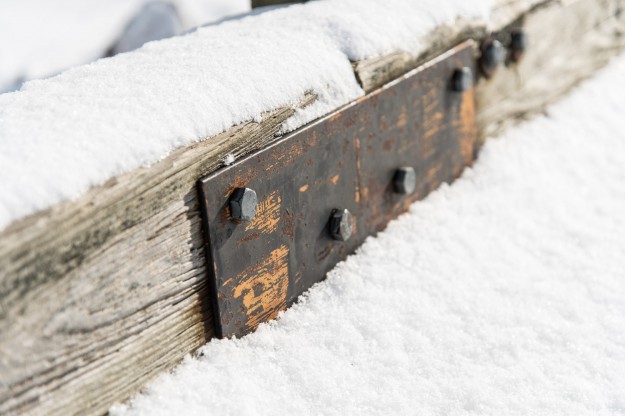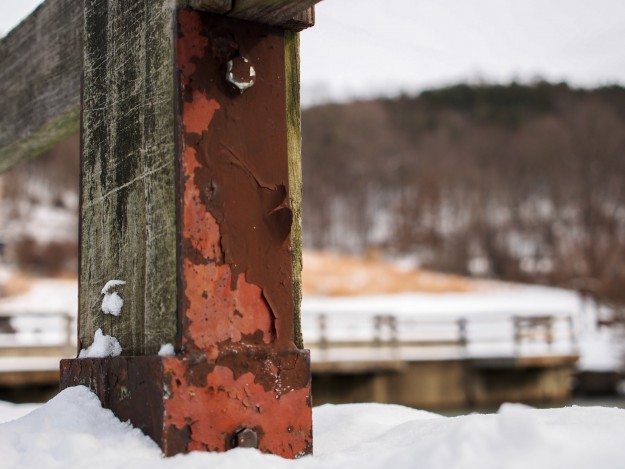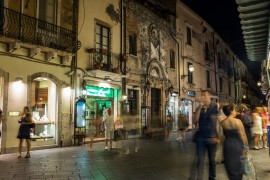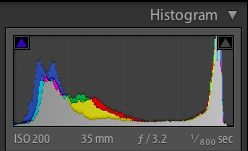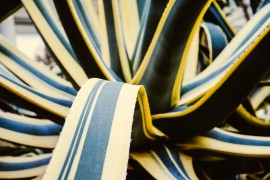Winter photography can be tough. The snow messes with your exposure meter and shots can come out looking grey as opposed to the splendid white that you saw with your own two eyes. Correcting the exposure is an easy fix, it’s creating interesting images that can be tough. When photographing a winter wonderland you may run into difficulty using auto focus and images can lack contrast, or punch. Here are some quick tips that will help you improve your winter shots.
Black and White
There are lots of reasons to shoot in black and white, there are two main ones that make black and white photography during the winter very appealing… Hiding distracting colors in an otherwise white vista and introducing emotion in an image that otherwise lacks punch.
Composition
Composition is even more important when shooting images where snow dominates the scene. Look for things like leading lines, converging lines, reflections, the rule of thirds, etc.. Check out my article on the Pyramid of Composition for a sure-fire way of creating interesting photographs in any condition.
Shadows
Things that contrast are always interesting. Finding lots of contrast in a landscape draped in snow can become difficult at times. Look for shadows in the snow, the dark shadow is a great contrast to the bright white snow. The shadow of the tree caught my attention as I was hiking along the lake (granted, tree shadows are not super interesting but it conveys the idea well). Look for shadows of interesting things like people, animals, and weird objects of all sorts.
Color
Alright, to be fair this could have gone in the section above labeled “Contrast,” but I feel that this so beneficial it belongs in its own section all together. Finding bright-colored subjects in an area draped in snow will jump out and viewers and enhance your photographs. Knowing when to include bright colors can be tricky, start by making the color the main focal point of the image and experiment from there.
I’m sure most of you have either played with or seen the programs that will make your images black and white and then you can color in select spots with the original color (think black and white scene with a black and white woman wearing a red dress). If you look closely you can find scenes that closely resemble these photochopped scenes when it snows.
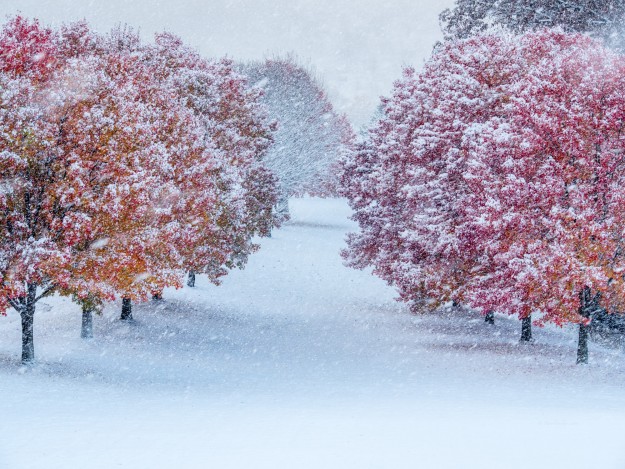 This photograph looks similar to a black and white scene where just the color of the leafs were pulled out however it was not enhanced in that way and this is what it looked like to the natural eye.
This photograph looks similar to a black and white scene where just the color of the leafs were pulled out however it was not enhanced in that way and this is what it looked like to the natural eye.
Timing
In the winter the days are shorter therefore you’ll be able to get sunset photography without waiting until 9 p.m. at night. The golden “hour” also seems to be longer because of the lower angle of the sun in relation to the earth so I find that ideal lighting is around much longer than in the summer months. Shooting in the evening after before and after the sun goes down seems more ideal to me because the temperature is generally a bit warmer than at the crack of dawn.
If you want photography that will stand out then you need to be out shooting when nobody else is. Snow storms are a great time to get the camera out and walk through the city, you’ll see people fitting the elements and get some really great shots. As the storm subsides you’ll see the sun start to peek through the clouds and create beams of light that paint areas of the frame.
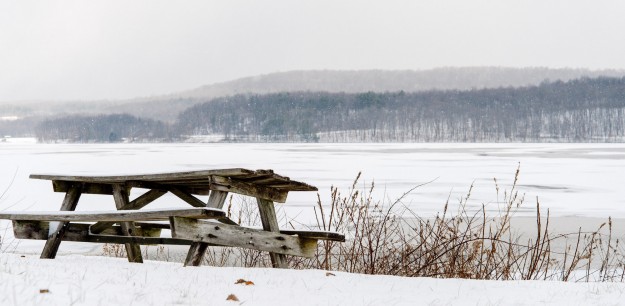 Visiting places during or after a snow storm will give yield photographs void of life where normally life is abundant. City streets, parks, and sidewalks will all be empty. Try to take advantage of this to show scenes that are seldom seen.
Visiting places during or after a snow storm will give yield photographs void of life where normally life is abundant. City streets, parks, and sidewalks will all be empty. Try to take advantage of this to show scenes that are seldom seen.
Be sure to protect your gear, snow landing on your camera and lens can be just as harmful as rain. Try not to wipe the snow into the crevices of your lens or camera otherwise you’ll end up with moisture inside of them. Always leave your camera in the camera bag for about an hour after you bring it inside so that it gradually warms up or you could end up with condensation inside the camera. There are plenty of rain covers for your camera that work just as well in the snow so be sure to check them out on Amazon.
Exposure
When photographing the snow or snowy landscapes the light meter in your camera will struggle. Your camera will under expose slightly creating grey snow as opposed to white. This is not an issue if you shoot in RAW format but if you shoot primarily in JPEG then you’ll have to use exposure compensation (move it to around +1) or manually over expose by about one stop. I like to shoot in RAW and depending on the lighting conditions I’ll under expose so that I don’t blow out the highlights with the light reflecting off of the white snow.
Have you captured any great winter shots this year? Share them with us here on PhotolisticLife by either submitting them to the Seasons Photo Contest or a Photo Journal. You can submit photos and stories by using the Submit an Article link in the main menu.

